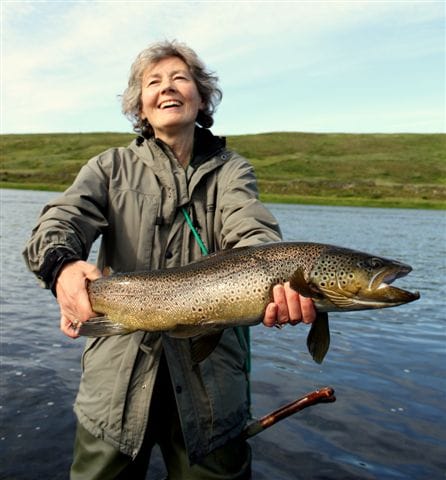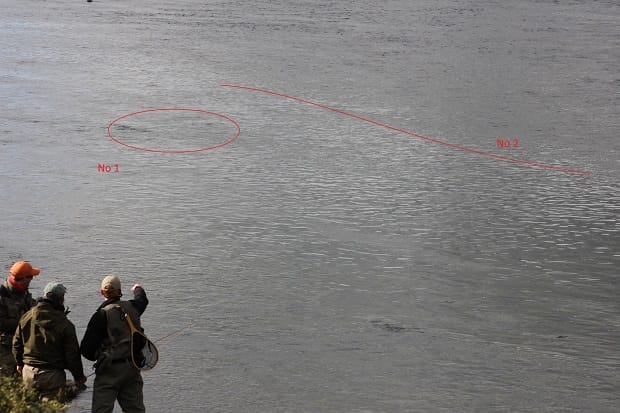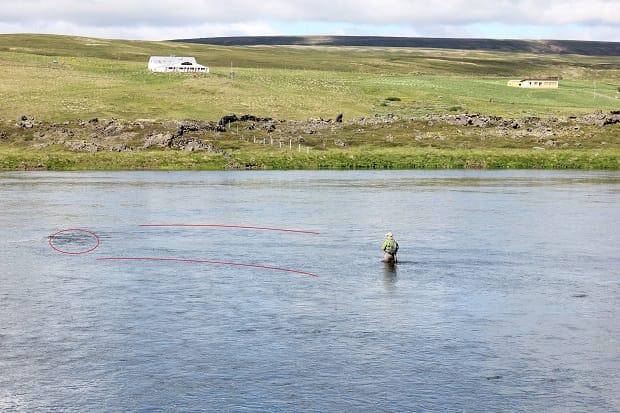Throughout Iceland the majority of rivers have crystal clear flows, with the exception of the odd glacial rivers, great you may think, simple you may think… Spot fish, cast to fish, hook fish, job done! Although, as ever, it is not that simple due to several reasons. Firstly, we can put one thing down to Darwinism – these trout have had generations of unmolested evolution improving their camouflage (the very dark colouration and heavily spotted pattern). Then, some of the riverbeds are made up of black lava sand; this makes it quite difficult to judge depth and obstacles, and spotting a dark coloured fish. Lastly, affecting vision are trees, or the lack of. We may complain about them jumping in the way of our casts usually but here as there are no trees lining the water’s edge this creates a lot of glare.
Do not let this put you off, we are not completely out on a limb and there are ways to locate these trout. We have surface currents and obstacles, and by reading these we can find the likely lies of the trout. Reading water is a subject that has been written about extensively; ultimately it is looking at the surface of the water for any variations such as current changes, bubble lines and obstacles. Below I have turned two photographs from the Laxa I Adaldal in Iceland into diagrams showing the likely lies.
In the first image you will see No. 1 highlights an area of disturbed water, this indicates that something is affecting the flow, in this case a piece of lava rock. Trout love obstacles like this and are often found just behind the rock on either the left or right or directly in front of the rock.
On the outside, No. 2, you will see a distinct difference either side of the line, on the top side you have the main push of the river and on the bottom side is an area of slacker water. Fish are for the best part lazy and greedy, always looking for areas where they have maximum food supply requiring minimum effort. You will often find fish right along No. 2.
In the second image you will see a fairly large obstacle circled, this is causing a lot of disruption including two seam lines marked in red that track back toward the angler. The main obstacle will be constantly stirring up sediment and fresh fish food; all the fish have to do is sit along the red lines and wait for the constant stream of food to come to them.
When targeting the likely areas of the water it is best to fish an attractor style dry fly. The large attractor flies will grab the attention of fish sat slightly deeper in the water and can lure them to the surface.
For more information or to make a booking please contact us or call +44 (0) 1980 847 389.



